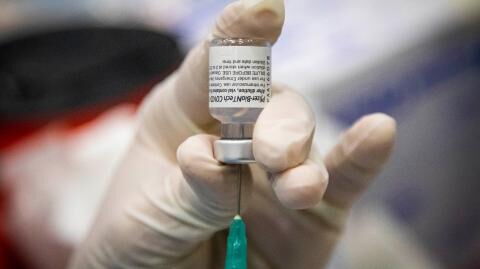Researchers from the Massachusetts Institute of Technology have recently conducted a study finding that COVID social distancing measures are ineffective in indoor environments. Results showed that the risk of being exposed to the virus was the same at 60ft as it was at 6ft.
Discover our latest podcast
Study questions CDC and WHO safety measures
Since the pandemic began, the Centre For Disease Control and Prevention (CDC) and the World Health Organisation (WHO) have urged to keep at least 6ft or 2m apart while socialising, especially while indoors.
However, a study published in the Proceedings of the National Academy of Science of the United States of America found that these measures were not enough to stop people from being exposed to coronavirus while indoors, and would like a new set of safety measures established for indoor settings. This is due to overwhelming evidence that small micron-scale aerosol droplets also play a large part in COVID transmission and not just large liquid droplets that are more prevalent in cases of coughing and sneezing.
One is no safer from airborne pathogens at 60 ft than 6 ft.
Researchers came to this conclusion by observing many factors that could affect COVID exposure, including air filtration, immunity and other strains. Scientists also measured respiratory activity such as singing, talking, breathing and eating. Results showed that if a person is singing indoors, those in the same room 6ft or 60ft away could be infected by aerosol droplets even if the signer is wearing a mask. MIT professor Martin Bazant told CNBC:
We argue there really isn't much of a benefit to the 6-foot rule, especially when people are wearing masks.
Researchers also found that the essential factor that both the CDC and WHO missed when setting COVID safety measures is the amount of time spent indoors. This factor alongside the size of the space, ventilation, respiratory activity and face mask use are much more important variables than social distancing.
On the other hand, with outdoor settings, Bazant revealed that infected air would likely be swept away and unlikely to cause transmission.
Given their findings, Bazant speculated that many of the businesses that were closed during the pandemic actually didn’t need to be:
Often times the space is large enough, the ventilation is good enough, the amount of time people spend together is such that those spaces can be safely operated even at full capacity and the scientific support for reduced capacity in those spaces is really not very good.
Safety measures are still important
While one study has shown that social distancing may not be as effective as we’d hoped in indoor settings, that doesn’t mean we should abandon COVID safety measures.
Wearing masks, sanitising our hands and keeping at least a 6ft distance will still help reduce COVID transmission and keep people safe. The CDC recommends avoiding the 3Cs, places that are closed, crowded or involve close contact. The CDC also advises people to stay up to date on COVID symptoms and isolate themselves if they exhibit any. Common COVID symptoms include:
- Fever
- Dry cough
- Tiredness
- Loss of taste and small
- Headaches
- Muscle aches
- Sore throat
- Nasal congestion
- Diarrhoea















